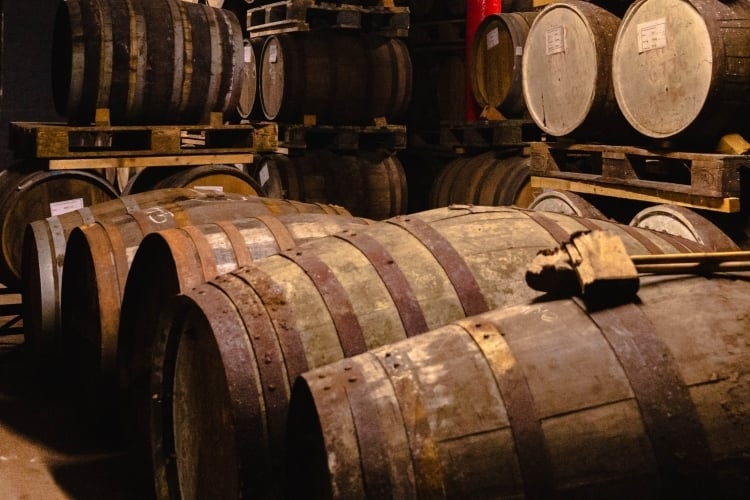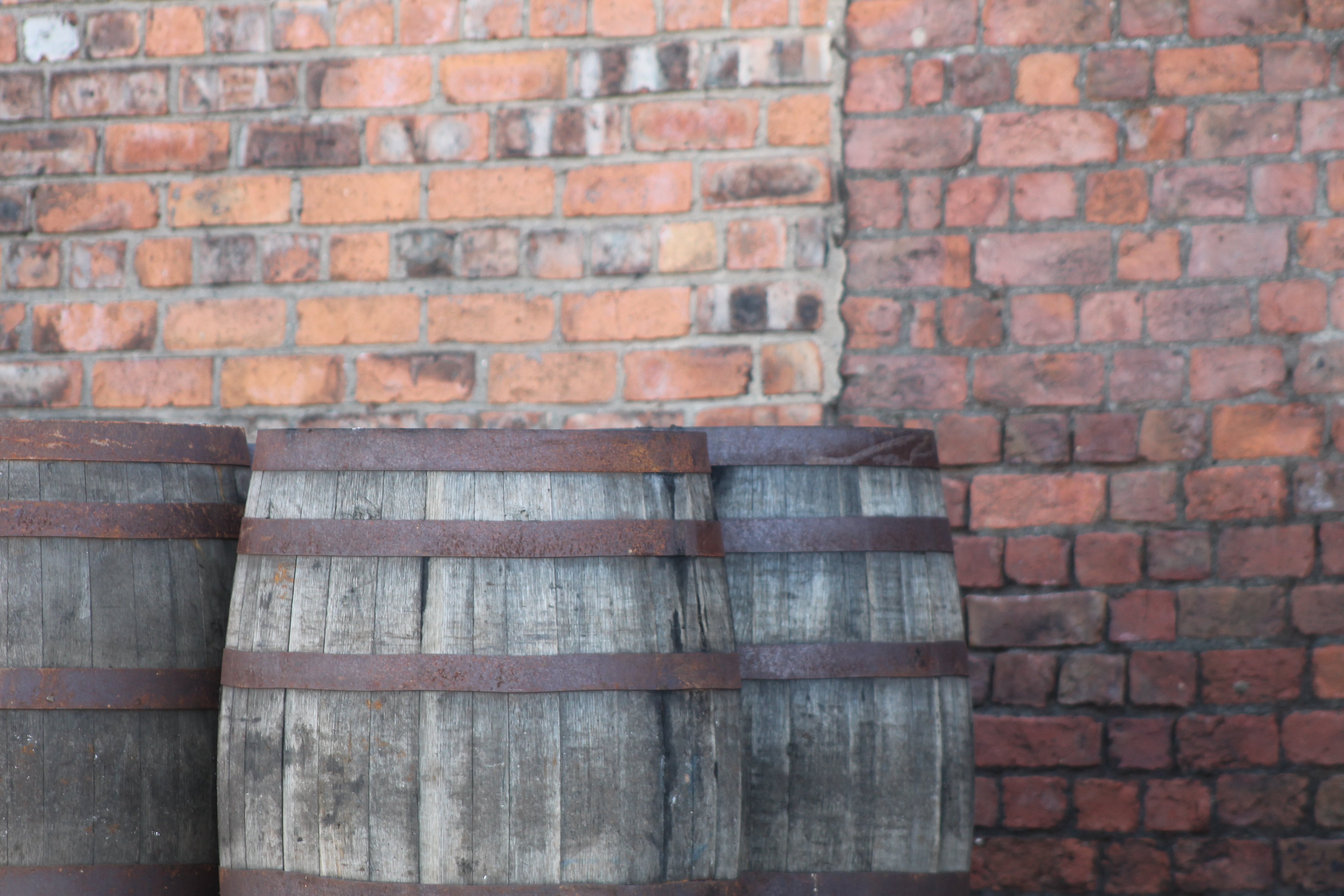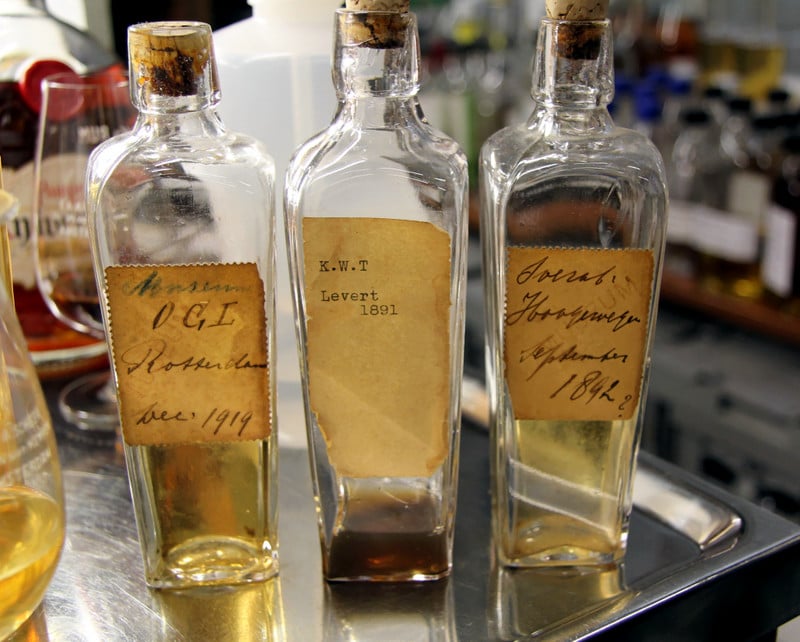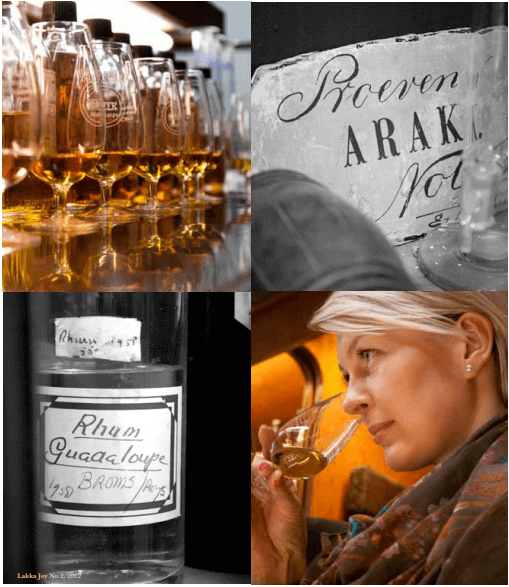How Rum Casks influence flavour

Under the influence: How different kinds of Casks affect Rum flavour
Imagine two identical batches of 12-year-old Rum side by side in a tasting room.
One has been aged exclusively in ex-bourbon barrels. The other has spent the last two years in sherry casks.
Now imagine sampling them. The colour, the aroma, the flavour profile…the entire experience of each is remarkably different. This is the quiet influence of cask selection at work.
Understanding the process is an essential part of the craft for anyone involved in selecting Rum for blending, bottling, or building a brand. In this blog, we’ll take you through the various kinds of casks and their impact on the final product.
Why the choice of cask matters in Rum ageing
Beyond the obvious factors of time and climate, the type of barrel chosen for maturation represents the key variable that shapes every aspect of a Rum, from aroma and mouthfeel to complexity and character.
The science behind this transformation is simple yet profound, with oak barrels working their magic through three distinct processes.
Process 1: Maturation
The spirit slowly absorbs compounds from the wood, building layer upon layer of complexity.
Process 2: Evaporation
Some alcohol and water escape through the wood, concentrating flavours like a gentle reduction.
Process 3: Oxidation
The crucial slow exposure to oxygen smooths and refines the harsh edges.
Think of the wooden barrel as a kind of mediator. It interacts with the spirit to add smoothness, complexity, and layers of taste that form the building blocks for a distinctive flavour profile.
The casks that shape character
Various species of oak are usually used to age Rum, in addition to less common woods such as chestnut. American oak is the most common, but it’s not unusual to use French or European oak either.
Why bourbon barrels rule the Rum world
Walk into any Rum warehouse and you are likely to find yourself surrounded by the distinctive wooden curves of ex-bourbon barrels. These American oak casks provide the backbone of Rum ageing thanks to a quirk of regulation. Bourbon casks can only be used once, which means a surplus of ex-bourbon casks is available for ageing other spirits, including Rum.
These barrels infuse notes of warm caramel, burnt maple, a slight smokiness and the robust oak itself. At the same time, they also amplify the vanilla, brown sugar and toffee flavours already present in the Rum.
Ageing Rum also serves to add a darker, deeper hue and the charred oak of the bourbon barrel intensifies this effect.
Key takeaway: Ex-bourbon casks offer an invaluable prede ictability without monotony. They provida familiar vanilla backbone, whilst leaving plenty of room for self-expression, delivering consistent results that scale beautifully.
The standout depth of Sherry casks
Looking for a richer, darker Rum? Or perhaps planning to create a more unusual release? You may wish to consider Rums aged in sherry casks.
Richly seasoned with Spanish sherry, these barrels imbue the Rum inside with layers of rich, dried fruit, nutty undertones, and the lingering presence of the sherry itself.
Sherry casks have to be managed very carefully. If not, the influence of the sherry’s tannic notes could dominate the Rum itself.
Needless to say, the kind of sherry they once contained dictates the outcome.
After holding dry sherry, Oloroso casks imbue notes of walnuts and almonds. Pedro Ximénez casks, on the other hand, introduce a sweeter profile of dates, figs, and prunes.
The real secret of sherry casks lies in the lactones and glycerine that change the mouthfeel of the Rum to create a rich, viscous texture and elevate the depth and perceived age of the spirit.
Key takeaway: Sherry casks are used to develop a truly unique profile, adding a layer of complexity that can transform good Rum into a truly memorable experience.
Port casks: where Rum meets juicy fruit indulgence
Port casks infuse the spirit of the Douro Valley, bringing a beautifully unexpected dimension to Rum ageing. A burst of juicy red fruit transforms even a straightforward aged Rum into something that stops you mid-sip.
Ruby port casks tend to bring brighter, more vibrant fruit flavours. Tawny port barrels, on the other hand, contribute more mature, oxidised notes that bring in a subtle nutty undertone.
The maturation process requires careful monitoring to ensure the character of the fortified wine complements the tropical notes of the Rum, rather than taking them over.
Key takeaway: Port casks can offer a distinctive character ideal for boutique brands and unique releases, with the kind of finish that appeals to adventurous consumers looking for their next discovery.
Cognac casks: the epitome of elegance
When French oak meets Caribbean spirit, something rather magical can often take place. Cognac casks represent perhaps the most elegant expression of Rum ageing, bringing a refinement that elevates the entire tasting experience.
These barrels, seasoned with France's most prestigious brandy, create a sophisticated flavour profile of stone fruit, toasted almonds, and an almost perfume-like spice. Different than American oak, the French oak contributes its own character while allowing the Rum's tropical origins shine through.
Key takeaway: For brands positioning themselves in the luxury segment, Cognac casks offer a discerning pedigree ideal for high-end, sipping-style Rums.
Wine casks: the Rum ageing lab
Wine casks are not commonly used for ageing Rum. Even so, they do offer the opportunity to experiment with new territories and unique flavours.
Each type of wine barrel tells its own story, creating almost endless profile possibilities. In terms of red wine casks, a Californian Zinfandel barrel introduces red fruit notes and rich vanillins. A French Burgundy cask, meanwhile, contributes darker berry notes and cedar undertones, with tannins that add structure and complexity. A striking deep reddish tinge also makes the Rum look as distinctive as it tastes.
White wine casks require careful handling and a delicate touch due to their acidic nature. Chardonnay barrels work well, contributing apple and stone fruit notes that complement rather than compete with Rum's natural character.
Key takeaway: High levels of experimentation result in unique flavour profiles that lend themselves to brands looking to create bold or limited-edition products.
Virgin oak: bold statements in wood
In contrast to all those mentioned above, Virgin oak barrels have never contained a wine or spirit to moderate their influence. That is why they can bring such a pure, unadulterated wood character, with aromas of vanilla and clove backed by notes of sweet ginger and coconut.
This intensity is both virgin oak's greatest asset and potential downfall. Those powerful notes can add depth and gravitas to younger Rums that might otherwise take years to develop. Yet at the same time, it risks overwhelming the subtle nuances of the spirit if not carefully managed.
That’s why virgin oak casks are best used to add a final touch of depth and complexity to the maturation.
Key takeaway: Virgin oak barrels require great skill, but in the right hands they can transform a straightforward spirit into a drink that commands attention.
Cask finishing: the art of layered complexity
One of the most interesting developments in Rum is the use of multi-cask ageing. This involves moving a batch of Rum between different types of barrel to build layers of complexity beyond the reach of single-cask maturation.
Needless to say, the right type of cask to compliment the maturation of the Rum needs to be carefully thought through.
The most common approach sees Rum begin its journey in ex-bourbon barrels to build a familiar vanilla and caramel foundation. A move to sherry casks will add dried fruit complexity, whereas a Port barrel will introduce a jammy fruit character. it is possible to take this approach further, creating three or four-stage journeys that result in elaborate and complex flavour profiles.
Key takeaway: This layering technique allows for high levels of individuality, ideal for clients with specific brand stories or specific audiences.
Choosing the right cask for your Rum brand
The beauty of cask selection lies not in following rules, but in understanding how each different type of cask shapes a very different kind of flavour profile. Your final choice will influence every aspect of the process from production costs and final pricing to target market and brand positioning.
This is where the right partner comes in. The Main Rum Company sources, stores and carefully manages an extensive range of single-cask Rums, each maintained the highest levels of quality.
Whether you’re building a new brand or expanding an existing range, we can help you navigate the complex landscape of cask selection, matching your vision to the right kind of flavour profile.
Our aged Rum specialists understand how the right cask selection can transform your vision into reality. Get in touch to discuss how we can help you select the perfect aged Rum for your market.


Browse the latest resources & industry insights to learn more about our companies and the Rum world in general.





